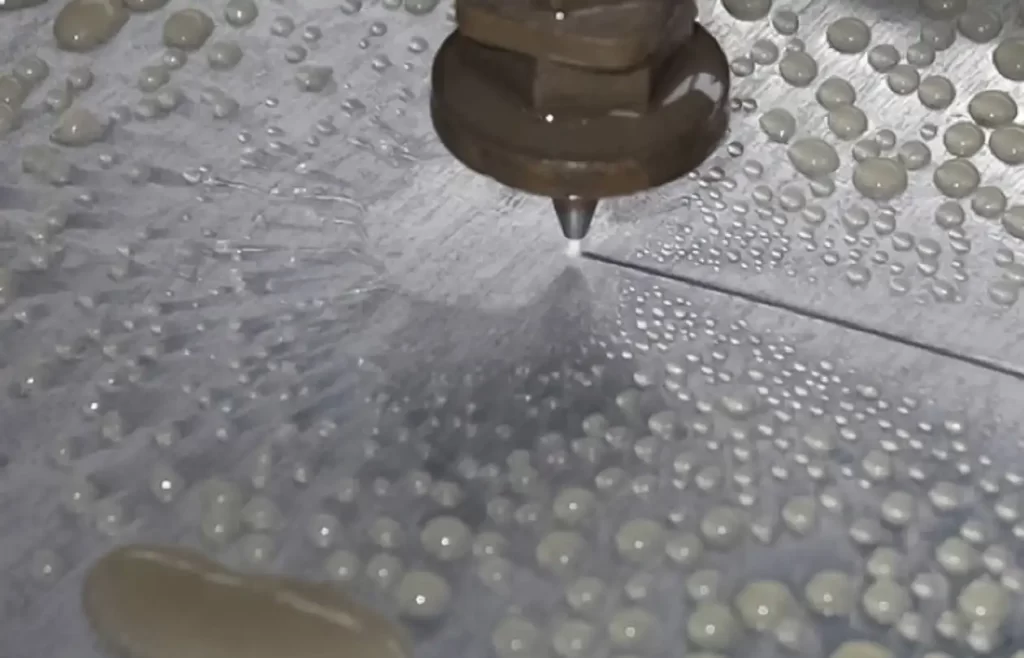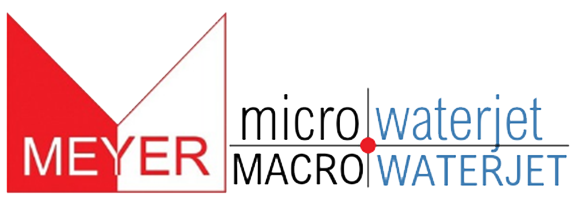
Microwaterjet® Cutting vs. Conventional Waterjet Cutting
Abrasive waterjet cutting has been around since the 1980s. Since then, developments like multi-axis cutting systems to ultra-high pressure for improved speed and reduced taper have been developed. In this blog, we’ll highlight the differences between standard abrasive waterjet and Microwaterjet® cutting technologies.
Advantages of Abrasive Waterjet Cutting
Fast Cutting Speeds
CNC abrasive waterjet cutting uses high-velocity water to accelerate abrasive particles through a carbide tube, creating impact power. Fast cutting speeds generate enough power to cut through 12”+ thick steel.
Roughing Process for Milling
Often used for creating nominal shapes from flat material, abrasive waterjet cutting leaves little material for final manufacturing processes, such as CNC milling.
Tight Nesting of Parts
Abrasive waterjet cutting uses a thin stream of water for the cutting tool, allowing parts to be tightly nested in a sheet of material. This reduces scrap and maximizes material usage.
No Heat-Affected Zones
Since abrasive waterjet cutting is a mechanical process, there are no extreme temperatures to be concerned with as compared to laser cutting.
No Recast Layer
Unlike laser cutting, there is no recast layer to be dealt with in-post processing.
Wide Range of Materials
Abrasive waterjet cutting can cut through nearly any material with very few exceptions. Brittle materials and laminates tend to be a challenge for abrasive waterjet cutting.
Disadvantages of Abrasive Waterjet Cutting
Thicker Material Shows Taper
Due to the dynamics of the abrasive stream, the cut edge will realize taper. Some new technology has incorporated multi-axis cutting to minimize this impact.
Wet Process is Problematic for Some Materials
Some materials are water-soluble and not a good fit for abrasive waterjet cutting.
Often Only Usable as a Roughing Process
Conventional abrasive waterjet cutting is most often used for rough-cutting shapes to be finished afterward. This is mainly due to the kerf striations and taper along the cut edge.
How Does Microwaterjet® Compare to Conventional Waterjet Cutting?
Using the same basic principles of high-velocity abrasive particles cutting through material, Microwaterjet® cutting technology refines the process using specialized cutting systems and abrasives specifically made for small abrasive jet sizes.
Small Kerf Cutting
Microwaterjet® cutting uses smaller cutting systems. Unlike conventional waterjet cutting that uses 0.8mm or 0.5mm diameters, Microwaterjet® stream diameters can be as small as 0.2mm.
Cutting Accuracy
Although the cutting accuracy of conventional waterjet is acceptable for its uses, Microwaterjet® can cut to geometric tolerances of +/-0.01mm (0.0005”)
Minimum Inside Radius
With an inside radius as small as 0.1mm, Microwaterjet® cutting can produce inside corner features approaching wire EDM capabilities.
Set-Up for Thin Materials
Since Microwaterjet® uses such small nozzles and fine abrasives, this limits the impact power of the system. For this reason, we specialize in cutting materials from 0.010mm-5mm thick (0.0005”-0.2”). Thicker materials can be cut on a case-by-case basis.
Which Cutting Solution is Right for You?
Want to learn more about waterjet cutting with the Microwaterjet®? Contact Meyer Tool Huntersville today to find a solution that can fulfill your cutting needs.
